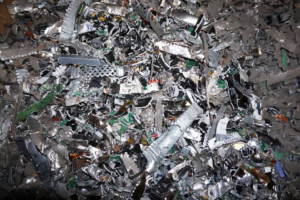Hard drives and microwaves simply shouldn’t mix—though that hasn’t stopped some daredevils from attempting to cook their drives.
 Microwaving is just one of the DIY ways people have tried dealing with their obsolete hard drives. It’s not a good way to erase data, obviously; destroying a hard drive never needs to end with a call to 911. But I understand how urgent it is to make sure that your data is permanently removed before throwing away an old hard drive. Even if it’s now worthless to you, that drive may be a treasure trove of information for data thieves. The need to protect their data leads a lot of people to try DIY destruction methods like drilling holes in hard drives.
Microwaving is just one of the DIY ways people have tried dealing with their obsolete hard drives. It’s not a good way to erase data, obviously; destroying a hard drive never needs to end with a call to 911. But I understand how urgent it is to make sure that your data is permanently removed before throwing away an old hard drive. Even if it’s now worthless to you, that drive may be a treasure trove of information for data thieves. The need to protect their data leads a lot of people to try DIY destruction methods like drilling holes in hard drives.
If you’re not familiar with what’s happening inside a hard drive, here’s a quick overview. A drive contains one or more platters that look a lot like CDs. Platters are generally made of aluminum or glass and coated with magnetic material. When the hard drive is in use, the platters spin while a small head moves across them; picture the way an old record player works. The head writes new data on the magnetic material and reads existing data. Even when the hard drive is no longer connected to a computer or other device, the data remains printed on the platters.
Once you understand the internal structure of a hard drive, it’s easy to see why certain DIY data destruction methods just won’t work. A lot of the things that people try at home are both ineffective and potentially dangerous.
Ineffective Destruction Method #1: Drilling Holes in Hard Drives
I can see how someone might think that drilling holes in hard drives could be an effective way to destroy them. Surely no computer would be able to read a drive that’s littered with physical holes, right? It’s true that your personal computer probably won’t be able to read a drive that looks like Swiss cheese. The heat from the drill might even cause damage that permanently warps the drive. But as long as there are intact sections of hard drive platters, the data stored on those sections is still technically accessible.
Ineffective Destruction Method #2: Submerging Drives in Water
Your cell phone will probably still work after you drop it in water, and so will a hard drive. Even if you leave hard drives to soak in water for hours, it’s unlikely that this will do anything to permanently destroy data.
Ineffective Destruction Method #3: Microwaving Hard Drives
I know what you might be thinking: “Metal? In a microwave? Who would do that?” Of all the DIY data destruction methods people have tried at home, this might be the most dangerous. Clearly, a metal hard drive has no place in the microwave—but that hasn’t stopped dozens of people from posting YouTube videos of themselves trying it.
Ineffective Destruction Method #4: Using Strong Magnets
Degaussing is the process of using magnets to destroy a magnetic field, scrambling any information stored there so it becomes unusable. Because hard drive platters use magnetized data, degaussing can actually be an effective way to destroy that data and make it unreadable. The catch is that degaussing requires magnets much stronger than the ones most people have access to. The commercial magnets that a business may have on its premises probably aren’t going to cause enough damage.
Ineffective Destruction Method #5: Physical Destruction
There may be a certain satisfaction in taking out your frustration on an old hard drive, but attacking it with a hammer or sledgehammer is really unlikely to do much good. First you would have to disassemble the drive to access the platters themselves. Any pieces that remained after you finished attacking the device would still contain data. (And it’s entirely too likely that you would end up with an embarrassing injury to pair with your lack of results.)
The Definitive Destruction Method: Shredding
Instead of drilling holes in hard drives or attempting any other DIY method of destroying hard drives, skip straight to the one method that guarantees permanent success. Shredding is the most effective way to destroy drives so that the data stored on them can never be reconstructed.
Knowing that your drives have been ripped into tiny shreds and safely recycled should give you some peace of mind. Plus, choosing professional shredding eliminates the risk that someone will get hurt or possibly start a fire in their quest to destroy a hard drive. For business owners, handling data destruction the right way is about protecting your employees as much as it’s about protecting your data. You don’t need someone injuring themselves at work because they were trying a DIY destruction method on a company drive.
Let Northeast Data Destruction take care of data destruction so you can focus on other things. Whether you want to drop off your drives or have us handle pickup, we’ll permanently destroy your drives in our secure NAID AAA-certified shredding facility—no effort required on your part. You may even be able to witness the shredding process if necessary.
Have more questions about destroying hard drives? Put down the drill and reach out to me instead. Contact me anytime.
